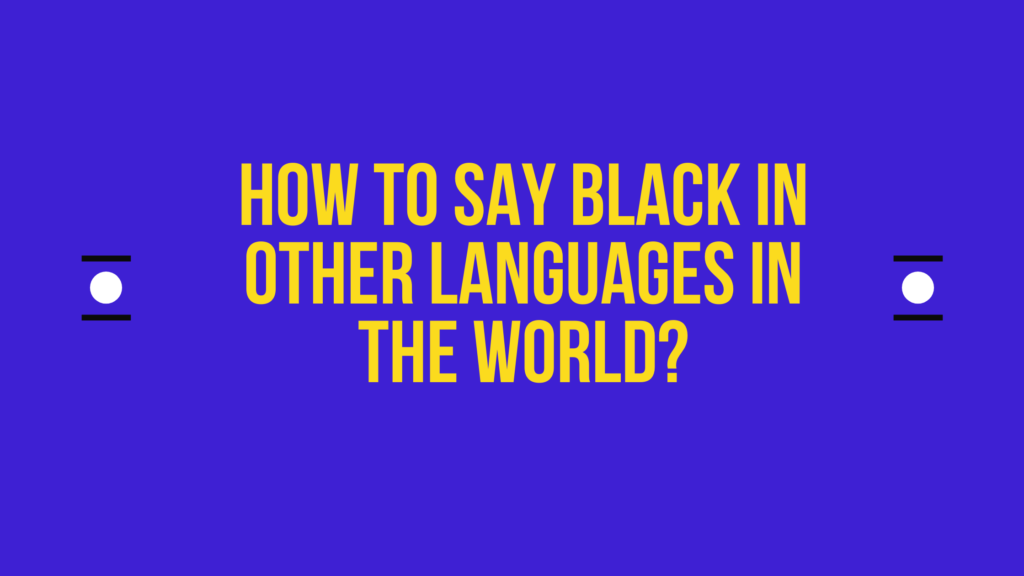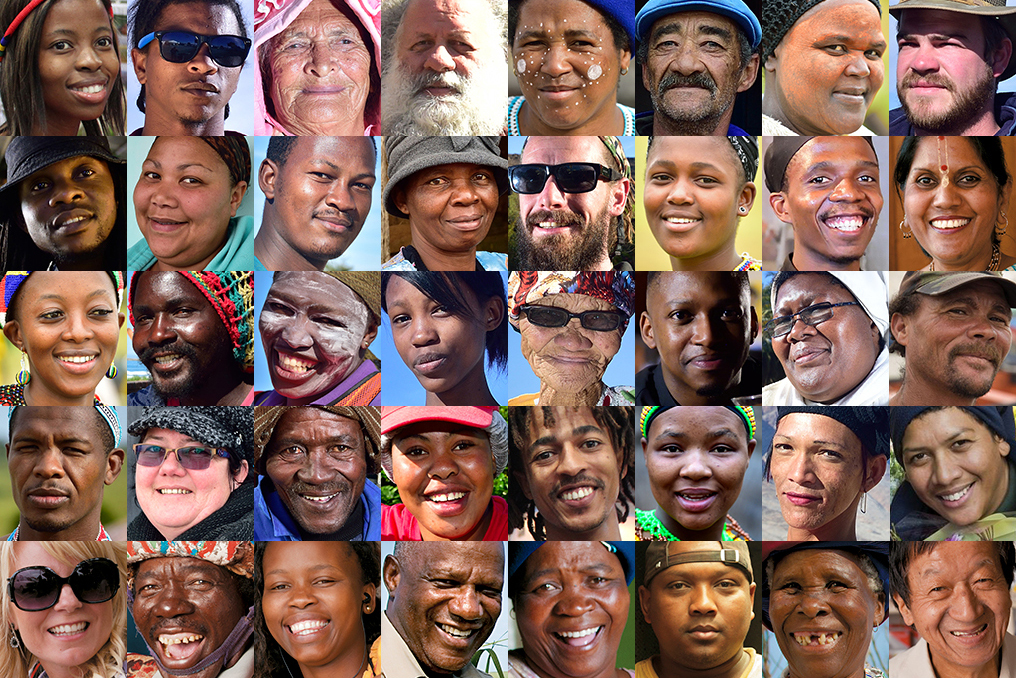Different languages for black sets the stage for this enthralling narrative, offering readers a glimpse into a story that is rich in detail and brimming with originality from the outset. It delves into the historical, sociolinguistic, and cultural aspects of languages developed and used by Black communities globally, providing a comprehensive understanding of their significance and the challenges they face.
This discourse will explore the origins, evolution, and cultural significance of these languages, examining their role as a means of communication, resistance, and cultural preservation. It will analyze the sociolinguistic factors that have influenced their development and use, discussing the impact of social class, geographical location, and cultural identity.
Additionally, it will identify and describe the linguistic features that distinguish Black languages from other languages, providing examples and illustrations to demonstrate these unique characteristics.
Historical Background of Languages for Black Communities
Black communities around the world have developed unique languages that reflect their cultural heritage and experiences. These languages have played a vital role in communication, resistance, and cultural preservation within Black communities.
The origins of these languages can be traced back to the African continent, where various linguistic groups developed their own distinct languages. During the transatlantic slave trade, these languages were brought to the Americas, the Caribbean, and other parts of the world, where they evolved and diversified.
Creole Languages
One of the most significant developments in the history of Black languages is the emergence of Creole languages. Creoles are languages that have developed from the contact between two or more languages, typically between a European language and an African language.
Creole languages have their own unique grammar and vocabulary, and they have become the primary languages of many Black communities around the world.
Examples of Creole languages include Jamaican Patois, Haitian Creole, and Gullah, which is spoken by African Americans in the Sea Islands of South Carolina and Georgia.
African-American Vernacular English (AAVE)
Another important development in the history of Black languages is the emergence of African-American Vernacular English (AAVE). AAVE is a variety of English that is spoken by many African Americans in the United States. It has its own unique grammar, vocabulary, and pronunciation, and it reflects the cultural experiences of African Americans.
AAVE has been the subject of much debate and controversy, with some people arguing that it is a legitimate dialect of English, while others argue that it is a substandard form of the language. However, there is no doubt that AAVE is a vibrant and expressive language that plays an important role in the lives of many African Americans.
Resistance and Cultural Preservation
Throughout history, Black languages have been used as a means of resistance and cultural preservation. During slavery, Black people used their languages to communicate with each other without being understood by their oppressors. They also used their languages to preserve their cultural traditions and to pass on their history to future generations.
Today, Black languages continue to play an important role in the lives of Black people around the world. They are a source of pride and identity, and they help to maintain a sense of community and belonging.
Sociolinguistic Aspects of Black Languages
Black languages have been shaped by a complex interplay of sociolinguistic factors. Social class, geographical location, and cultural identity have all played significant roles in their development and use.
Role of Social Class
Social class has historically influenced the prestige and status of Black languages. In many societies, standard varieties of European languages have been associated with higher social status and educational opportunities, while Black languages have been marginalized and stigmatized. This has led to a diglossic situation, where different languages are used in different social contexts.
Role of Geographical Location
Geographical location has also influenced the development of Black languages. The isolation of many Black communities has led to the development of distinct dialects and languages. For example, the Gullah language spoken by African Americans in the Sea Islands of South Carolina and Georgia is a unique creole language that has been influenced by both English and African languages.
Role of Cultural Identity
Cultural identity is a key factor in the vitality and transmission of Black languages. Black languages are often seen as symbols of cultural identity and resistance. They are used in religious ceremonies, music, and literature to express the unique experiences and perspectives of Black communities.
Linguistic Features of Black Languages
Black languages exhibit unique linguistic features that distinguish them from other languages. These features span phonology, grammar, and lexicon, shaping the distinctive nature of Black language varieties.
Phonological Features
Black languages often exhibit distinctive phonological characteristics. These include:
Vowel shifts
Black languages frequently feature vowel shifts, such as the fronting of back vowels or the raising of low vowels. For example, in African American Vernacular English (AAVE), the vowel /ɑ/ in words like “father” is pronounced as a fronted [æ].
Consonant deletion
Black languages may exhibit consonant deletion in certain contexts, particularly in final position. For instance, in Jamaican Patois, the final consonant in words like “dog” and “cat” is often deleted, resulting in pronunciations like [dɔːg] and [kæt].
Consonant cluster simplification
Black languages may simplify consonant clusters by reducing or eliminating certain consonants. For example, in Gullah, the consonant cluster /str/ in words like “street” is often simplified to [s].
Grammatical Features
Black languages also exhibit unique grammatical features. These include:
Double negatives
Black languages often allow for the use of double negatives, a feature that is not found in standard English. For instance, in AAVE, sentences like “I don’t have no money” are grammatically acceptable.
Non-standard verb agreement
Black languages may exhibit non-standard verb agreement patterns. For instance, in Jamaican Patois, the verb “is” is often used in the third person singular form even when the subject is plural.
Habitual aspect
Black languages often have a habitual aspect that is used to indicate repeated or ongoing actions. For example, in AAVE, the suffix “-ing” is often added to verbs to indicate habitual actions, as in “He be talking all the time.”
Lexical Features
Black languages have distinctive lexical features that set them apart from other languages. These include:
Unique vocabulary
Black languages often have unique vocabulary items that are not found in standard English. For instance, AAVE has words like “bad” (meaning “good”) and “jive” (meaning “nonsense”).
Borrowed words
Black languages have incorporated words from other languages, including African languages, Spanish, and English. For example, Jamaican Patois has borrowed words like “yuh” (from the Akan language) and “man” (from English).
Slang
Black languages often have a rich slang vocabulary that is used to express a variety of emotions and ideas. For instance, AAVE has slang words like “lit” (meaning “exciting”) and “turnt” (meaning “intoxicated”).
Cultural Significance of Black Languages
Black languages play a profound cultural role within their respective communities, serving as a testament to the rich history, values, and beliefs of Black people. These languages are deeply intertwined with the social fabric of Black communities, shaping their identity, worldview, and cultural expression.
Black languages have been instrumental in the transmission of oral traditions, storytelling, and music. They have served as a medium for preserving cultural heritage, passing down knowledge and values from one generation to the next. Through their unique linguistic features, Black languages reflect the experiences, struggles, and triumphs of Black communities.
Storytelling and Oral Traditions
Black languages have a rich tradition of storytelling and oral narratives. These stories often carry historical significance, conveying lessons about the past and offering insights into the cultural values of Black communities. Storytelling has been a way for Black people to connect with their ancestors, preserve their history, and pass down cultural knowledge.
- For example, the Griots of West Africa are renowned for their ability to preserve and recite oral histories, genealogies, and cultural traditions.
- In the Caribbean, storytelling has been a central part of cultural expression, with tales of Anansi the Spider and other folk heroes reflecting the resilience and creativity of Black communities.
Preservation and Revitalization Efforts

Preserving and revitalizing Black languages is crucial to maintaining cultural heritage, fostering community identity, and empowering marginalized communities. These efforts involve a range of initiatives, including language documentation, education programs, and community engagement.
Language documentation involves collecting and preserving linguistic data, such as recordings, transcriptions, and grammatical descriptions. This provides a valuable resource for researchers, educators, and community members to study and learn the language. Educational programs, such as immersion schools and language classes, play a vital role in teaching Black languages to younger generations and fostering language fluency.
Role of Technology
Technology has become an invaluable tool in language preservation and revitalization efforts. Online resources, such as language learning apps, dictionaries, and grammar guides, make it easier for people to access and engage with Black languages. Social media platforms and online communities provide opportunities for speakers to connect, share experiences, and support each other.
Role of Education
Education is a fundamental aspect of language preservation. Incorporating Black languages into school curricula, offering language classes, and providing teacher training programs can help ensure that future generations have the opportunity to learn and use these languages.
Role of Community Engagement
Community engagement is crucial for successful language preservation and revitalization efforts. Involving community members in decision-making processes, creating language-based activities and events, and promoting intergenerational language transmission can foster a sense of ownership and responsibility for the language.
Challenges and Successes
Language preservation and revitalization efforts face various challenges, including limited funding, language loss due to assimilation and globalization, and negative attitudes towards Black languages. However, there have also been significant successes, such as the establishment of language immersion schools, the development of language-learning materials, and the increased awareness of the importance of Black languages.
Preservation and revitalization efforts require ongoing commitment and collaboration among researchers, educators, community members, and policymakers. By working together, we can ensure that Black languages continue to thrive and enrich the cultural and linguistic diversity of our communities.
Black Languages in the Digital Age

The advent of digital technologies has significantly impacted the use, transmission, and preservation of Black languages. This digital age presents both opportunities and challenges for these languages.
One significant impact is the increased accessibility of Black languages through online platforms. Social media, for example, has become a vibrant space for Black language speakers to connect, share content, and engage in discussions in their native languages.
Social Media and Online Platforms
- Social media platforms like Twitter, Facebook, and Instagram have facilitated the creation of online communities where Black language speakers can interact and share cultural content.
- These platforms have also enabled the dissemination of Black language resources, such as dictionaries, grammar guides, and language learning materials.
- Additionally, social media has played a crucial role in raising awareness about the importance of preserving and revitalizing Black languages.
Language Learning Apps
Language learning apps have emerged as another important tool for Black language preservation. These apps provide structured lessons, interactive exercises, and gamified learning experiences that make it easier for individuals to learn and practice Black languages.
- Apps like Duolingo and Babbel offer courses in various Black languages, including Haitian Creole, Jamaican Patois, and Gullah Geechee.
- These apps have made Black languages more accessible to a wider audience, particularly those who may not have access to traditional language classes.
Preservation and Revitalization
Digital technologies have also contributed to the preservation and revitalization efforts of Black languages. Online repositories, such as the African American Language Archive at the University of Florida, provide a secure platform for storing and sharing recordings of Black languages.
- These repositories help preserve the linguistic diversity of Black communities and provide valuable resources for researchers and language learners.
- Furthermore, digital technologies have enabled the creation of online dictionaries and grammar resources that document and standardize Black languages.
Case Studies of Black Languages
Black languages are diverse and dynamic, with a rich history and cultural significance. Case studies of specific Black languages provide valuable insights into the historical, sociolinguistic, and cultural factors that have shaped their development and use.
Jamaican Patois, Different languages for black
Jamaican Patois is a creole language spoken by the majority of the population of Jamaica. It developed from a pidgin language that emerged during the era of slavery on the island, when African slaves and their European masters needed a common means of communication.
Jamaican Patois has been influenced by English, Spanish, and African languages, and it has developed its own unique grammar and vocabulary.
Jamaican Patois is a vibrant and expressive language that is used in all aspects of Jamaican life, from everyday conversation to music and literature. It is a symbol of Jamaican identity and culture, and it has played an important role in the development of Jamaican music, particularly reggae and dancehall.
Gullah
Gullah is a creole language spoken by the Gullah people of the Sea Islands off the coast of South Carolina and Georgia. It developed from a pidgin language that emerged during the era of slavery on the islands, when African slaves and their European masters needed a common means of communication.
Gullah has been influenced by English, Spanish, and African languages, and it has developed its own unique grammar and vocabulary.
Gullah is a rich and expressive language that is used in all aspects of Gullah life, from everyday conversation to storytelling and religious rituals. It is a symbol of Gullah identity and culture, and it has played an important role in the development of Gullah music and folklore.
Haitian Creole
Haitian Creole is a creole language spoken by the majority of the population of Haiti. It developed from a pidgin language that emerged during the era of slavery on the island, when African slaves and their French masters needed a common means of communication.
Haitian Creole has been influenced by French, Spanish, and African languages, and it has developed its own unique grammar and vocabulary.
Haitian Creole is a vibrant and expressive language that is used in all aspects of Haitian life, from everyday conversation to government and education. It is a symbol of Haitian identity and culture, and it has played an important role in the development of Haitian music and literature.
Summary

In conclusion, different languages for black are a testament to the rich linguistic and cultural diversity of the African diaspora. They have played a vital role in shaping the identities, histories, and cultural expressions of Black communities worldwide. Preserving and revitalizing these languages is crucial for ensuring their continued existence and the preservation of the cultural heritage they embody.
This discourse has provided a comprehensive overview of the different languages for black, highlighting their historical, sociolinguistic, and cultural significance. It has also explored the challenges and opportunities presented by digital technologies and the efforts being made to preserve and revitalize these languages.
By understanding and appreciating the linguistic diversity of Black communities, we can contribute to the preservation of their cultural heritage and the promotion of linguistic equity.
Question Bank: Different Languages For Black
What are the different types of Black languages?
Black languages encompass a wide range of languages spoken by Black communities around the world, including African languages, Caribbean Creole languages, and African-American Vernacular English.
Why is it important to preserve Black languages?
Preserving Black languages is crucial for maintaining the cultural heritage and identity of Black communities, as they embody the unique experiences, histories, and perspectives of these communities.
What are the challenges facing Black languages today?
Black languages face challenges such as language loss due to globalization, negative attitudes and stereotypes, and limited resources for language preservation efforts.